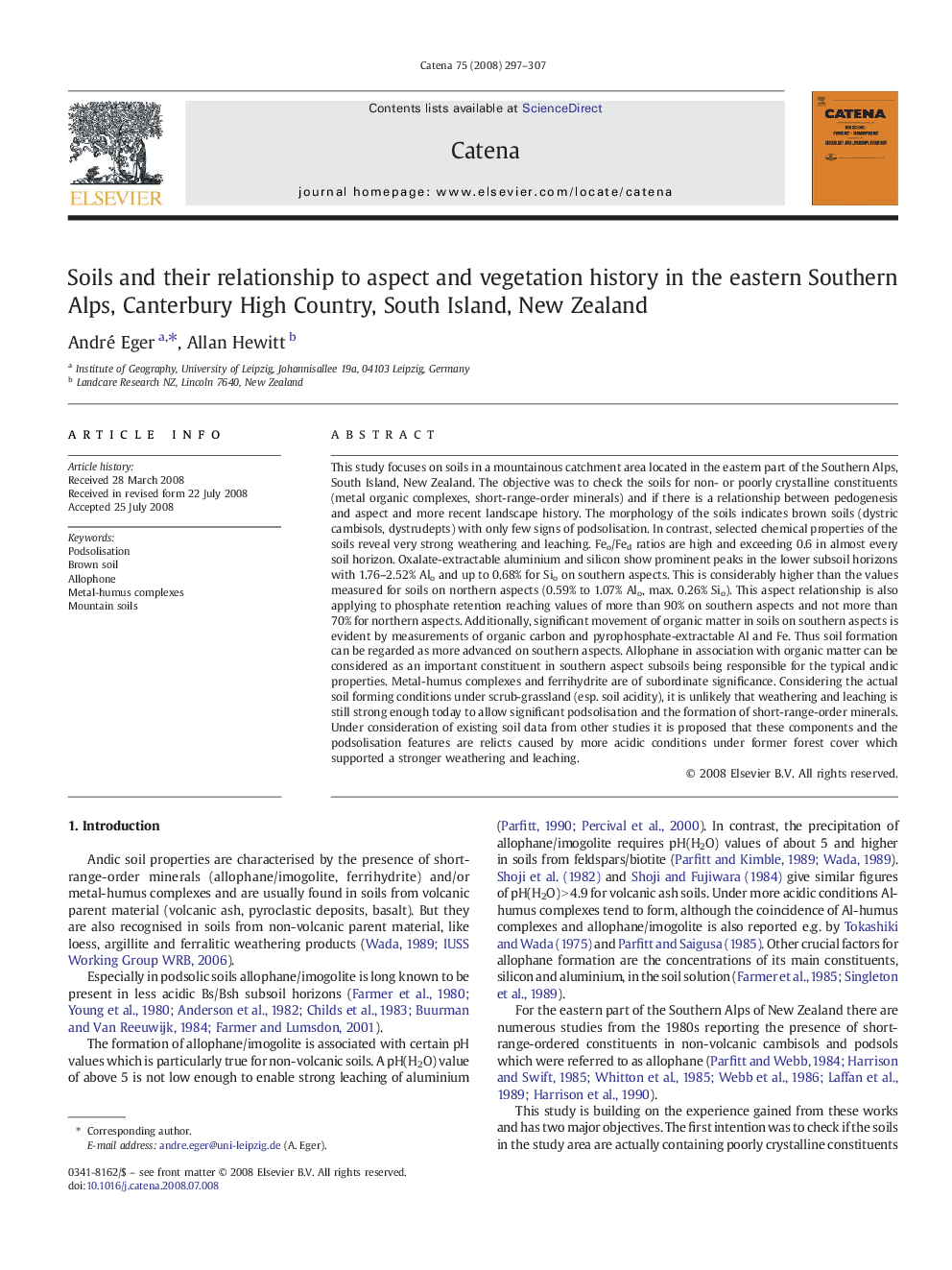| Article ID | Journal | Published Year | Pages | File Type |
|---|---|---|---|---|
| 4572466 | CATENA | 2008 | 11 Pages |
Abstract
This study focuses on soils in a mountainous catchment area located in the eastern part of the Southern Alps, South Island, New Zealand. The objective was to check the soils for non- or poorly crystalline constituents (metal organic complexes, short-range-order minerals) and if there is a relationship between pedogenesis and aspect and more recent landscape history. The morphology of the soils indicates brown soils (dystric cambisols, dystrudepts) with only few signs of podsolisation. In contrast, selected chemical properties of the soils reveal very strong weathering and leaching. Feo/Fed ratios are high and exceeding 0.6 in almost every soil horizon. Oxalate-extractable aluminium and silicon show prominent peaks in the lower subsoil horizons with 1.76-2.52% Alo and up to 0.68% for Sio on southern aspects. This is considerably higher than the values measured for soils on northern aspects (0.59% to 1.07% Alo, max. 0.26% Sio). This aspect relationship is also applying to phosphate retention reaching values of more than 90% on southern aspects and not more than 70% for northern aspects. Additionally, significant movement of organic matter in soils on southern aspects is evident by measurements of organic carbon and pyrophosphate-extractable Al and Fe. Thus soil formation can be regarded as more advanced on southern aspects. Allophane in association with organic matter can be considered as an important constituent in southern aspect subsoils being responsible for the typical andic properties. Metal-humus complexes and ferrihydrite are of subordinate significance. Considering the actual soil forming conditions under scrub-grassland (esp. soil acidity), it is unlikely that weathering and leaching is still strong enough today to allow significant podsolisation and the formation of short-range-order minerals. Under consideration of existing soil data from other studies it is proposed that these components and the podsolisation features are relicts caused by more acidic conditions under former forest cover which supported a stronger weathering and leaching.
Keywords
Related Topics
Physical Sciences and Engineering
Earth and Planetary Sciences
Earth-Surface Processes
Authors
André Eger, Allan Hewitt,
